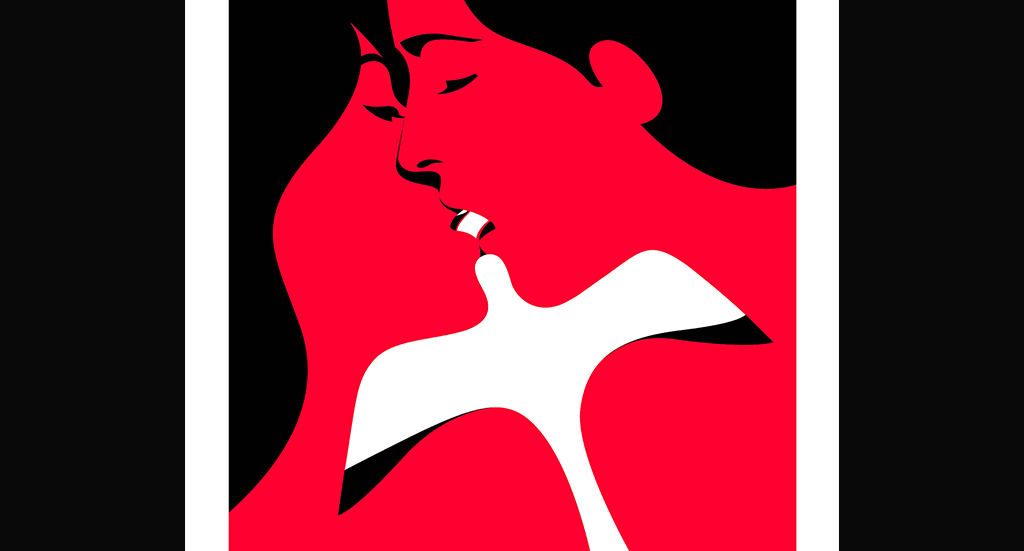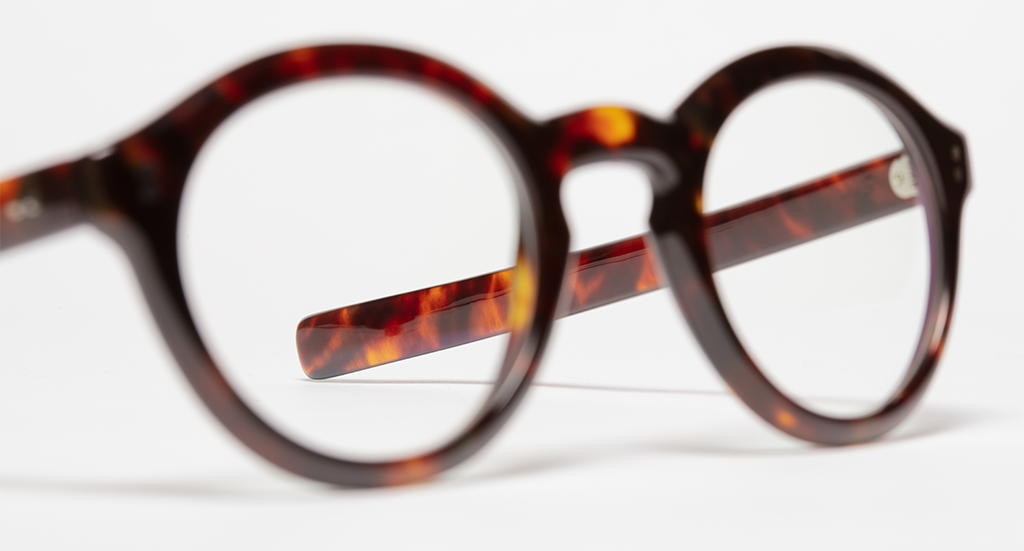Makers Bible
Honour thy artisans, craftspeople and craft artists
Michael Schmidt on his manifesto for quality, passion and craftsmanship

»In our opinion, products and food must be ‘real’, not hype, but honest, long-term approaches.«

You grew up in advertising. Since 2008, you have been running Melville Brand Design, a design agency for branding and branded storytelling in Munich. Tell me more …
Back in the early nineties, when I had finished my community service, I was fascinated by advertising – the art of seduction – the creative side. So, I was determined to join one of the most creative agencies. I started at DDB in Frankfurt, where I met Dick Davies, a creative client services director who became my mentor. He taught me the job from the ground up and made it appealing to me.
Eventually, I reached my goal. I was in Amsterdam at one of the most creative advertising agencies in the world, Wieden & Kennedy. Once I had achieved that, I wanted to move to the client side. I spent two years as advertising manager at Nintendo of Europe. With the launch of Pokémon and a total of around 70 TV commercials on air, I had achieved everything I wanted there. I moved on to Munich.
From advertising to design. From then on, I wanted to make the world more beautiful, not louder. There I met Lars Harmsen, a creative mind with whom I immediately clicked – and still do today – so after a few years we decided to found Melville. Together with Bavarians Johannes König and Florian Brugger, also passionate designers, we founded a limited company that still exists today with the same team – and remains one of the best decisions of my professional life. Our agency got off to a promising start with a book project, the adidas History Book. Designing books is still our passion today.
How did you come to the decision to create the Makers Bible?
In 2015, we were in a deep crisis. We partners were divided and the bank account was almost empty. We had to find something we wanted to stand for and that would give us an identity. In addition, sustainability was on everyone’s lips, and, at the same time, greenwashing was beginning in the corporate world. Craft brands and the people behind them act and produce sustainably. Whether they are traditional businesses or start-ups, their materials are usually renewable and recyclable and mostly designed to be so durable that they can be passed on. What could be more sustainable?
Somehow, it went down well. And we emerged from the crisis. Above all, however, it also defined a customer base for us as an agency. But we also knew that we needed to be patient in terms of the reputation of craftspeople — makers and crafters, as we call them — and that we had to stay on top of the topic in order to be credible. Today, we have craftspeople and manufacturers among our customers.






There are now four Bibles. Which one started it all and why?
Actually, there are five. It started with an issue that wasn’t called Makers Bible yet. It featured men’s stuff, from Japanese selvedge denim and Leica cameras to skateboards and café racers. The first Makers Bible was Beetroot & Steel. At the time, it was a very masculine take on cooking. Lots of blood, fire and blades. It sold out immediately and is now only available on eBay.
With The ALPS, we explored the question of whether a mountainous region brings out different crafts than, say, the flatlands. Does alpine culture bring with it a different mentality? The Süddeutsche Zeitung also found this exciting and licensed the book in German. Our The ALPS is almost sold out.
Shortly before Covid, we dedicated the Human Space issue to the interior design of private spaces, i.e. rooms where we like to spend time. From classics by Carl Hansen, ClassiCon and Tonet to highly innovative concepts and brands. We interviewed Piero Lissoni in Milan and photographed brutalist buildings in India. All in all, it was a very aesthetic issue. Only a small number of the limited black edition are still available today.

The ‘Human Space’ issue was followed by ‘Crafting Cuisine’. How did you come up with the thematic focus on cooking?
The Crafting Cuisine issue is, after Beetroot & Steel, a contemporary ‘post-Covid revisit’ of the theme of cooking, cuisine and indulgence. In keeping with the zeitgeist, we feature more vegan/vegetarian foods and have moved away from a purely masculine perspective. We also place a small focus on Italian and Japanese cuisine, but we also showcase regions of Europe that are worth visiting for their cuisine alone. When it comes to cooking itself, but also in table culture, everyone can be a bit of a craftsman.

What is your selection process like? What criteria must manufacturers and suppliers meet to be included in your selection?
The mission statement of our Makers Bible brand is ‘A manifesto for quality, passion and craftsmanship’. That defines the criteria. In our opinion, products and food must be ‘real’, not hype, but honest, long-term approaches. Whether it’s everyday items or food, we have to be convinced that the maker values their customers as much as the animal, the plant or the material.
Our makers tend to take quality very seriously at every step, not wanting to take shortcuts, looking you in the eye and acting responsibly. Can everything be done 100% by hand today? Does a machine make sense, e.g. to protect the health of the maker? Craftsmanship does not mean being stuck in the past. In the past, indigo for blue dyeing came via camel and sailing ship, today it comes by air freight. True denim comes from Japan today; Europe simply does not have the capacity.



Craftspeople and artisans are usually extremely passionate people. Which encounters/discoveries have particularly stuck with you so far?
Basically, craftsmanship means doing the same manual movement over and over again, perhaps for a lifetime. You have to want to do that. In addition to skill, passion is of course essential for perseverance. In my opinion, we should distinguish between artisans, craftspeople and craft artists.
Those without ‘art’ in their name make something they know they can sell. Depending on the price of the materials used and the time involved, they sell their products themselves or through retailers, or they work to order, sometimes to custom specifications. Ultimately, they fulfil a purpose.
Artists want to change the perspective of viewers and buyers. They take a high risk because they complete their work first and only then look for buyers. Gold and silversmiths, for example, or sculptors. If things go well, they also find clients in advance. The utility of their products is less rational, but the products are more individual.
Some time ago, you started publishing a compact guide called ‘Handmade Quality’ in German language, first for your home city of Munich, then for the Voralpen region and then South Tyrol. What was your aim and objective in making these regional selections?
Our guidebooks to handmade quality lead people to people, not to sights. Once again, the driving force was: what do we like?
The Munich Guide was our pandemic project during the first lockdown. Suddenly, you saw your own neighbourhood during the week, and ‘shop locally’ was obviously advisable if you loved your neighbours. So, we discovered retailers, restaurants and craftspeople in the neighbourhoods and included them in the book. With 1.5 million inhabitants, three quarters of whom are newcomers, we thought we would find readers. Six weeks after publication, we were completely sold out.
The Voralpen edition, covering the area from Lake Constance to the Berchtesgaden Alps, also featured accommodation providers with a similar philosophy. The message: why wander far afield? What’s more, during the first winter of the pandemic, Bavaria’s mountain communities were literally flooded with Munich residents seeking the mountains. So, our message was: it’s just as beautiful halfway there, where genuine products are made and you can strike up conversations with the locals – perhaps with the intention of buying something.
South Tyrol is the most popular short-break destination for Munich residents. There, they promise that everything is ‘natural’. A lot of money is spent on this message. Yet South Tyrol is one of the most densely populated landscapes in Italy and relies heavily on monocultures with devastating long-term consequences. So, we wanted to find those who have returned to sustainable agriculture and biodiversity. We advise people to travel there by train and guide them to people off the beaten track.
We are particularly proud that we described the South Tyrolean Mountain Farmers’ Aid Association in such a way that, as a result, a number of people actually volunteered to spend a week or two helping out ‘high up’ on the mountain farms that are so vital to South Tyrol’s survival.




What publications are you planning next?
That’s an economic question for us. So far, I’ve been doing the curation, editorial and data management on my own with one colleague for almost six months. Only then will it become a team effort to produce such a bible. This means that resources are an issue. So, it will probably be another guide, and we will return to a neighbouring region.
Are there any plans for digital additions and events?
Yes, of course. The website makersbible.com tells more stories, especially those that we can’t fit into any of our books at the moment. There is also a maker finder and, of course, our online shop. We have included a digital service in Crafting Cuisine: you can find almost every maker online using the approximately 150 QR codes in the book – your smartphone is always within reach anyway.
The coolest things are the ‘Makers Bible curates…’ events, especially when they have something to do with cooking and enjoyment, i.e. get-togethers or ‘collaborations’ between our brand and a house or other brand with an expert audience, from after-work events to similar high-quality events such as the Inlux Luxury Business Day, where we got to know each other — although this is quite unique and out of our reach.
Thank you, Michael!






Join our Community